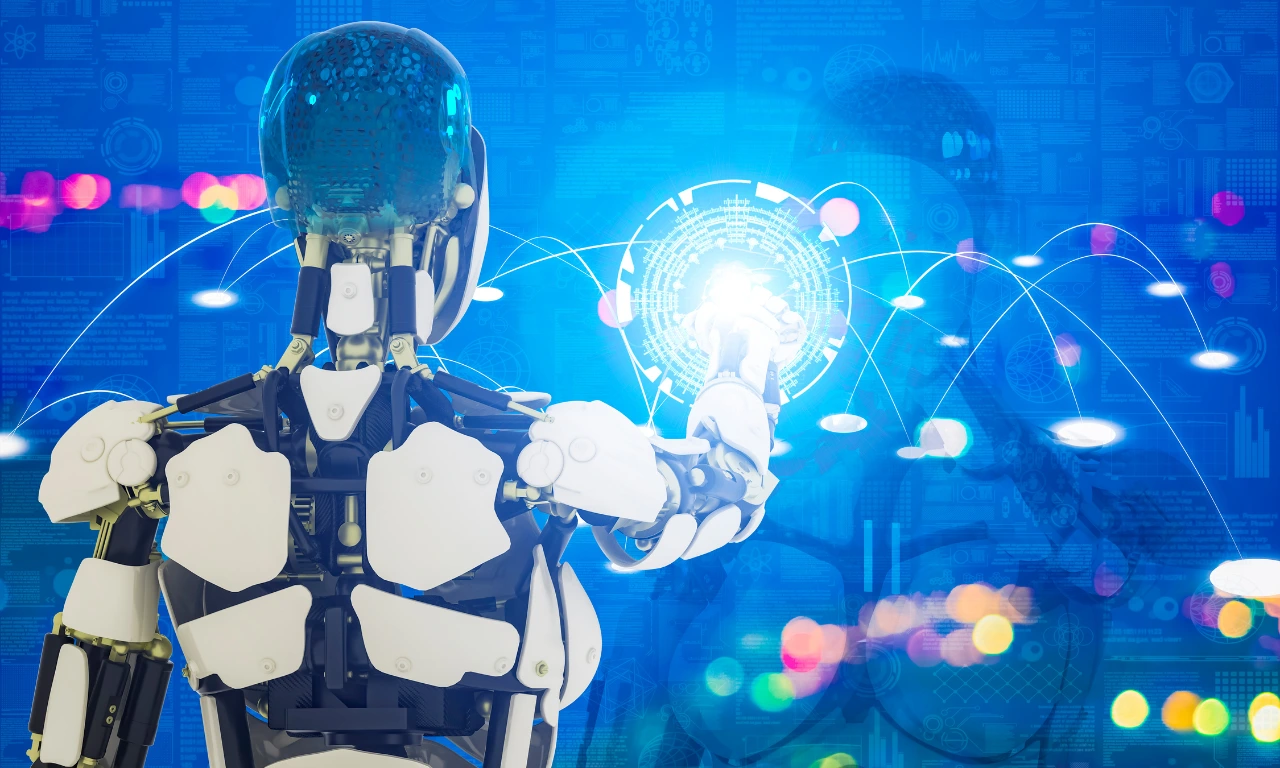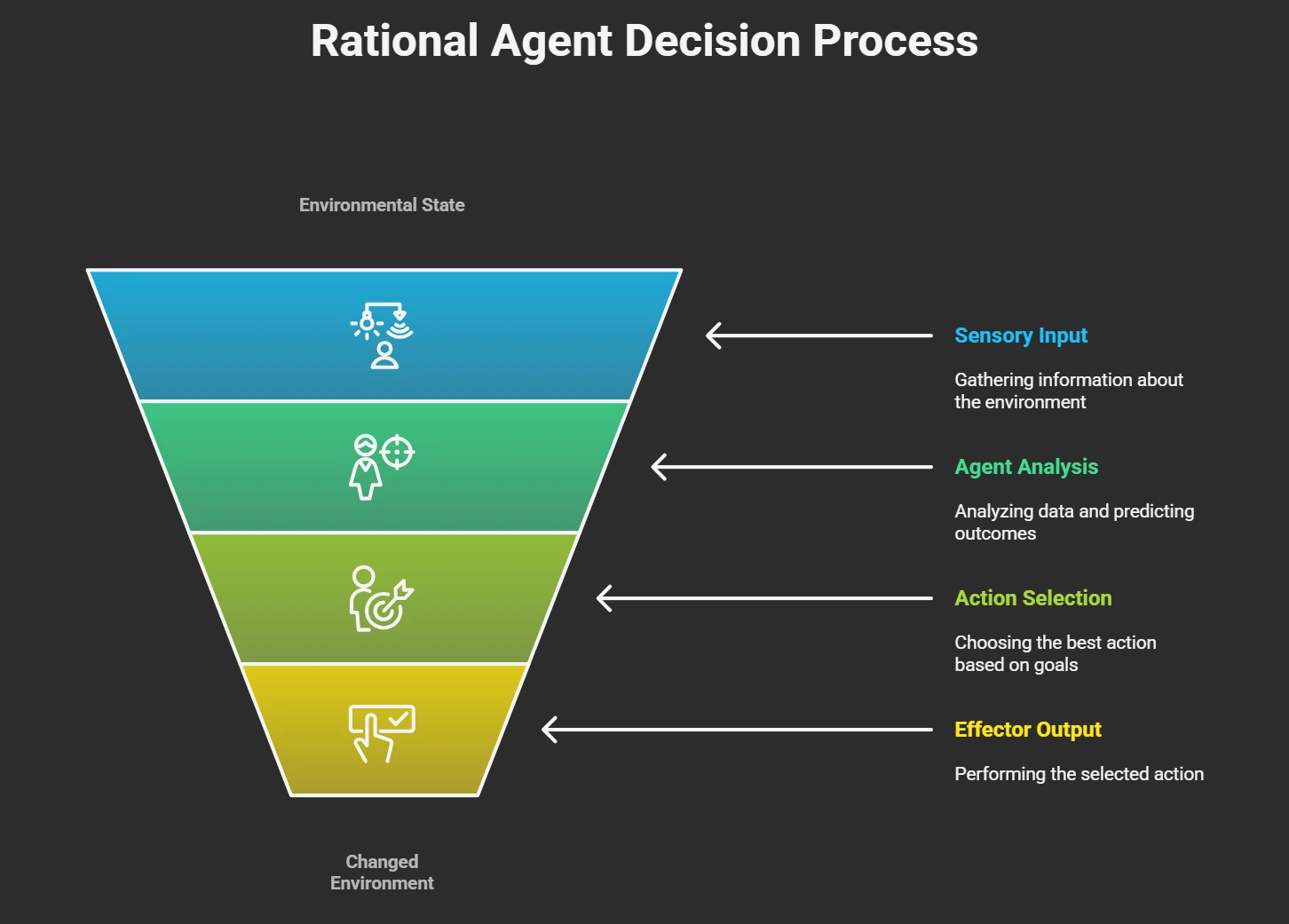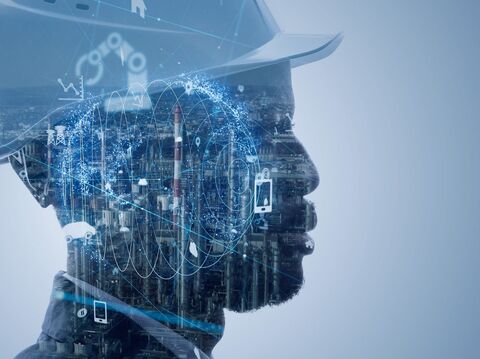Rational Agents in AI: Understanding the Meaning with Diagrams and Examples

As AI evolves, our connection with it is becoming more seamless and intuitive. Rational agents, which are smart systems built to make decisions that lead to certain goals, are at the heart of this change. Think of a chatbot or a self-driving car. Both assess situations, process huge amounts of data and act in smart ways to get the best results.
Rather than simply doing what they're told, these agents evaluate their options, consider the risks, and choose how to act.
This blog talks about what rational agents in AI are, the different kinds that exist, and how they work to simplify our daily lives with automation.
What is a Rational Agent in AI?
A rational agent is like a smart helper that understands its surroundings and makes the best possible decisions to reach a goal. These goal-based agents listen to data through sensors, think through options, and act on it for the best outcome.
For instance, a self-driving car senses traffic and road signs and then decides whether to slow down, turn, or speed up to make sure the trip is safe. It is its ability to choose wisely based on what it knows, what it wants to achieve, and what limits it faces that makes it 'rational'.
Rational agents in AI are already being adopted everywhere to serve different purposes, such as:
-
Virtual assistants: Virtual assistants make daily chores easier, keep track of schedules, and help businesses make decisions.
-
Finance and stock trading: They keep an eye on market trends, look at data, and decide quickly whether to buy or sell something based on what they've learned.
-
Healthcare: They help doctors diagnose conditions and suggest treatments to personalise patient care.
-
Industrial robotics: These machines use sensors to figure out what's going on around them and can do things like repair, inspection, or assembly with minimal human input.
-
Transportation: Rational agents help self-driving cars stay safe on the roads by analysing sensor data and adjusting to traffic conditions.
Working of a Rational Agent
To accomplish predefined objectives, rational agents in AI independently assess their surroundings, make judgments, and act.

Here is the detailed procedure in which these agents work:
Sensing the Environment
Using sensors or data sources, the agent gets information from its surroundings. A self-driving car, for instance, uses cameras, and a virtual assistant analyses user data.
Defining the Goal
It knows what it needs to achieve based on clear performance metrics tailored to its task, such as increasing social media revenue or navigating traffic safely.
Evaluating Options
Using its knowledge and past experiences, the agent assesses different actions. It uses bounded rationality in AI to make the best choice it can within the limits of what it knows.
Taking Action
Once a decision is made, the agent interacts with the environment, physically or digitally, to pursue its goal.
Learning From Feedback
The agent looks at the results to figure out what went well and what didn't. This knowledge helps you make better choices in the future.
Repeating the Cycle
This whole process keeps happening over and over, which lets the agent evolve, refine, and improve through autonomous decision-making.
Rational Agent Types
Rational agents use their information to make the best judgments. However, not all agents behave similarly. Let's walk through the primary types to find out how they think, act, and improve.
1. Simple Reflex Agents
These agents instantly respond to what they see, like a reflex. If the criteria are met, they act without thinking or remembering. They operate effectively in simple scenarios but get confused in complex or unanticipated situations.
2. Model-Based Reflex Agents
The agents react very quickly but have a mental picture of the surroundings. They can guess what's happening even when information is hidden. They are great at handling partial or unclear data well.
3. Goal-Based Agents
These agents act with a goal in mind. They plan steps and make decisions based on how to reach that goal. They react while moving toward a specific outcome.
4. Utility-Based Agents
Sometimes, there are many ways to reach a goal. Utility-based agents evaluate all possibilities and choose the best. They’re good at making smart choices in difficult settings involving risks or trade-offs.
5. Learning Agents
These agents learn from their experiences. They observe what works and adjust their behaviour over time. They’re ideal for changing environments and tasks that need long-term growth.
Components of a Rational Agent
To design an intelligent agent architecture, we need to understand four core components. These make up the PEAS framework: Performance, Environment, Actuators, and Sensors. Together, they allow a rational agent in AI to think, act, and learn effectively.
Performance Measure
Performance measure in AI defines what success means for the agent. It helps agents achieve goals efficiently, like a robot vacuum that cleans well and saves energy. It helps the agent make smart trade-offs and focus on performance.
Environment
The environment is where the agent acts, whether in a physical space or a virtual world. An effective agent-environment interaction helps the agent respond to obstacles, changes and challenges it encounters.
Actuators
Once an agent has decided what to do, it needs a way to carry out those decisions. That’s where actuators help rational agents. Depending on the type of agent, these could be physical components like wheels, motors, robotic arms, or even tools that speak or type like a chatbot.
Sensors
Sensors pick up information from the environment, such as detecting dirt or obstacles, as in the case of a robot vacuum cleaner. This information keeps the agent's perception-action cycle going.
Rational Agent Examples
Here are some common examples of how a rational agent in AI helps improve work and decisions:
-
Finance: AI agents analyse market data to help with trading, manage risks, and detect fraud.
-
Healthcare: They assist doctors by reviewing patient data and research to recommend the best treatments.
-
Automation: AI powers devices like self-driving cars and robot vacuums to make smart decisions.
-
Customer support: Chatbots use AI to answer questions and provide personalised assistance.
-
Dynamic pricing: AI adjusts prices automatically based on demand, stock, and competitor pricing.
-
Analytics: AI automates data cleaning and helps find insights quickly using simple, natural language questions.
Rational Agent vs Intelligent Agent
Intelligent agent and rational agent are two terms that are used a lot in the field of artificial intelligence. They sound like each other, but they're not the same. It's easy to understand if we take a look at this comparison table:
| Aspect | Intelligent Agent | Rational Agent |
|---|---|---|
| Core Idea | A system that senses its surroundings and takes action to meet a goal. | A smart decision-maker who uses logic to choose the best actions for reaching their goal. |
| Perception | Uses sensors or inputs (cameras, microphones, data feeds) to understand its world. | Gathers available information but filters it through logical reasoning to guide decisions. |
| Decision-making | Follows pre-set rules or algorithms to decide what to do next. | Analyzes options, evaluates outcomes, and chooses the most effective action through reasoning. |
| Learning ability | Learns from past experiences and changes behavior accordingly. | Also learns and adapts but ensures new actions are logically sound and goal-oriented. |
| Autonomy | Can function without human help. | Fully autonomous, guided by rational thinking to ensure actions serve the goal. |
| Goal orientation | Acts to reach a specific target or outcome. | Always aims to reach the goal, adding intelligence by being utility-based. |
| Examples | Self-driving cars, voice assistants, recommendation systems. | Chess-playing programs, financial planning tools, route optimization software. |
Advantages and Disadvantages of Rational Agent
There are good and bad things about every system. Understanding both helps us use it better and prepare for challenges.
Let’s look at the key benefits and challenges:
| Pros | Cons |
|---|---|
| Decision Making | Can process lots of information quickly; considers all options for best decisions. |
| Efficiency | Automates tasks, saving time and increasing efficiency. |
| Cost Effective | Automates repetitive tasks, reducing costs. |
| Expandability | Can handle large data and multiple domains with minimal changes. |
| Improves Safety | Detects suspicious activity quickly, enhancing security and reducing human error. |
How Rational Agents are Evolving With Reinforcement Learning
A traditional rational agent in AI often struggles in complex and unpredictable environments because it follows fixed rules and pre-set decisions. This makes it challenging for them to adapt, especially when they are in new settings or don't have the complete picture.
While reinforcement learning improves agent-based modelling, this is changing. It lets agents make better decisions over time by learning from their mistakes.
As a result, these agents become more flexible, smarter, and better equipped to handle real-world challenges, marking a significant evolution in how AI systems operate.
Conclusion
In artificial intelligence, a rational agent is an entity that acts in the best interests of the system, usually a machine or program. From self-driving cars to trade bots, they have a huge effect, and the following data seems to prove this.
According to Deloitte, 25% of businesses using generative AI will begin deploying agentic AI pilots by 2025. By 2027, this number is expected to rise to 50%.
GrowthJockey can create unique agent-based solutions that meet your business needs whether you're an enterprise, a startup incubator, or looking for expert AI consulting support. We help businesses make smarter, faster, and more autonomous decisions with the power of rational agents in AI.
Rational Agent in AI FAQs
What is a rational agent?
A rational agent is an AI system that perceives its environment and takes action to achieve specific goals in the most effective way possible.
What is a rational agent and an omniscient agent?
A rational agent uses the knowledge it has to make the best choice it can. Compared to a reasonable agent, an omniscient agent is assumed to have complete knowledge of the environment and always makes the right choice.
What is rational behaviour in AI?
In AI, ‘rational behaviour’ means always picking actions that give you the best chance of reaching your goals, given the information you have access to and the things going on around you.
What are the 5 types of agents in AI?
The five types are- simple reflex agents, model-based reflex agents, goal-based agents, utility-based agents, and learning agents.








